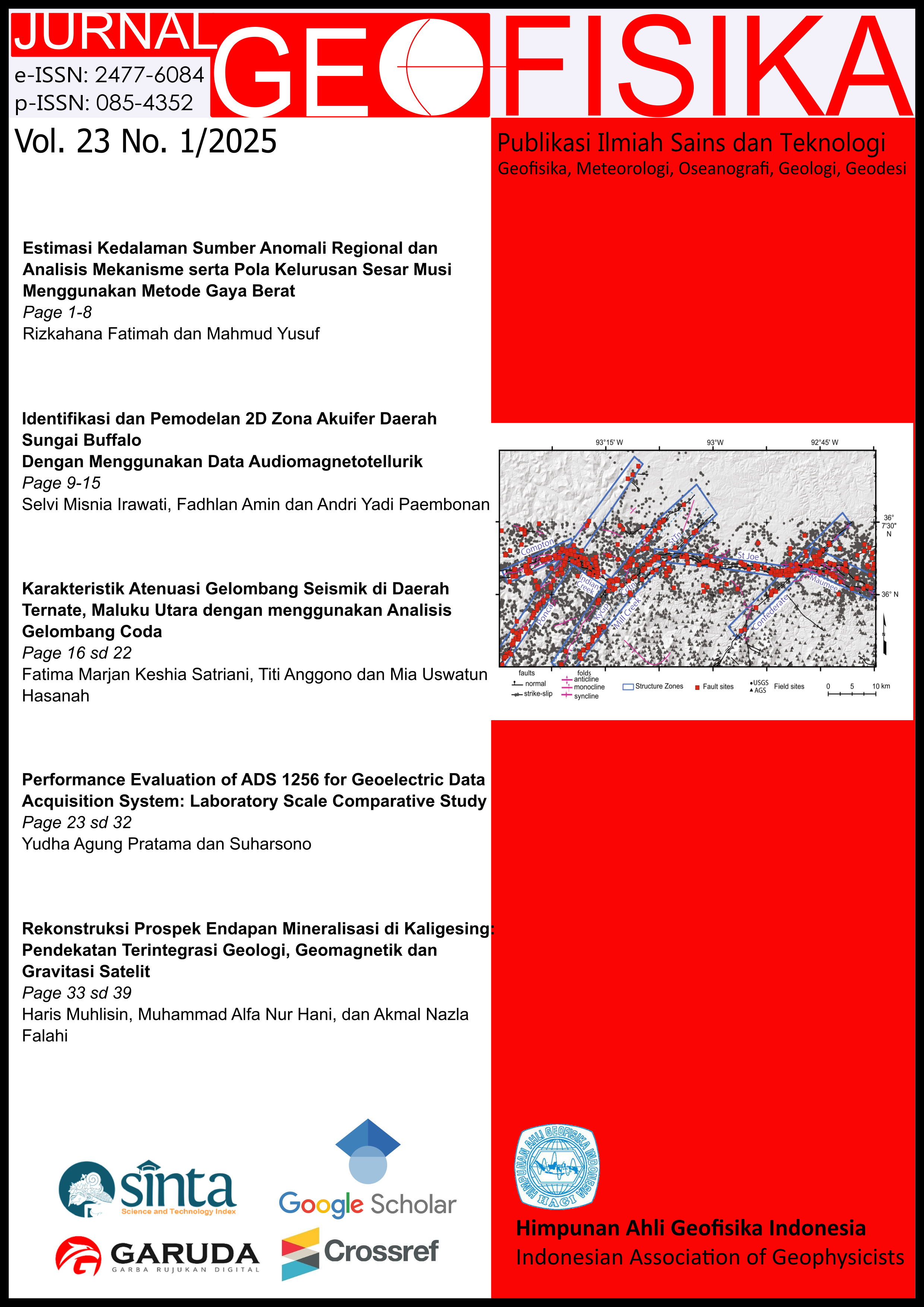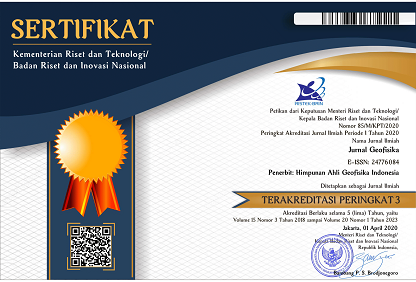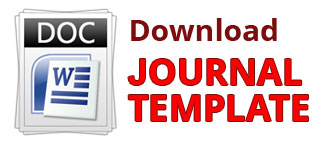Identifikasi dan Pemodelan 2D Zona Akuifer Daerah Buffalo River Dengan Menggunakan Data Audiomagnetotelluric
Keywords
Audiomagnetotelluric, Aquifer, Groundwater, Geoelectrical StrikeAbstract
Water is one of the important components in life on earth. The water source that is widely used now is groundwater. Groundwater is water that is below the surface and occupies cavities in the geological layer. This layer is called the aquifer layer. Groundwater exploration from shallow to very deep depth targets is an option for water availability.the study area is in the watershed of Buffalo, Arkansas. The buffalo river area has the potential for groundwater with a very deep depth. The depth of groundwater is very deep it is a problem to use geophysical exploration methods that are commonly carried out such as geoelectricity. Estimating aquifer layers is a problem that can be solved using audiomagnetotelluric (AMT) methods, especially aquifer layers at depths of more than 100 meters. Hence the need for this method to achieve targets and lithology at such depths. The use of the AMT method with a frequency range of 1 Hz – 10,000Hz which can reach depths of more than 1000 meters is one of the solutions to the problem of estimating very deep targets. AMT data rotated towards geoelectrical strike by N75oE. AMT modeling used using 2D inversion, the type of inversion is Non Linear Conjugate Gradient. Based on the results of modeling and interpretation, the formations arranged in the study area consist of the Bloyd formation, Hale formation, Boone formation, Everton formation and Ordovician formation. Layers that have potential as aquifer layers are obtained at low resistivities of 1-100 Ωm, are at depths of 0 - 500 meters with lithology arranged in the Bloyd formation and Hale formation. The formation is composed of several types of rocks, namely sandstone and limestone
References
Hadian, M. S. (2006). Sebaran akuifer dan pola aliran air tanah di Kecamatan Batuceper dan Kecamatan Benda Kota Tangerang, Propinsi Banten. Bandung: Jurnal Geologi Indonesia.
Khyzhnyak, M. (2014). Geoelectric Strike and Its Application In Magnetotelluric. Reykjavik: University of Iceland.
Kirsch, R. (2006). Groundwater Geophysics. Berlin: Springer.
Niasari, S. W. (2015). A Short Introduction to Geological Strike and Geo-electrical Strike. AIP Publisher.
Owolabi, S. T. (2020). A groundwater potential zone mapping approach for semi-arid environments using remote sensing (RS), geographic information system (GIS), and analytical hierarchical process (AHP) techniques: a case study of Buffalo catchment, Eastern Cape, South Africa. Arabian Journal of Geosciences.
Rodi, W., & Mackie, R. L. (2001). Nonlinear conjugate gradients algorithmfor 2-D magnetotelluric inversion. Geophysics, 174-187.
Simpson, F., & Bahr, K. (2005). Practical Magnetotellurics. Cambridge University Press.
Siripunvaraporn, W. (2012). Three Dimensional Magnetotelluric Inversion: An Introductory Guide for Developers and Users. 5-27.
Syukri, M. (2020). Pengantar Geofisika. Banda Aceh: Syiah Kuala University Press.
Wolf, R. J. (1981). Hydrogeology Of The Buffalo Aquifer, Clay And Wilkin Counties, West-Central Minnesota. Minnesota: Minnesota department of natural resources.

This work is licensed under a Creative Commons Attribution 4.0 International License.
The copyright of all articles belongs to the authors. All other copyrights is held by the Journal











